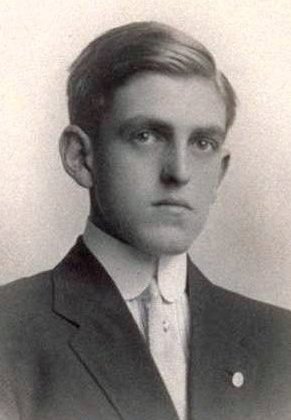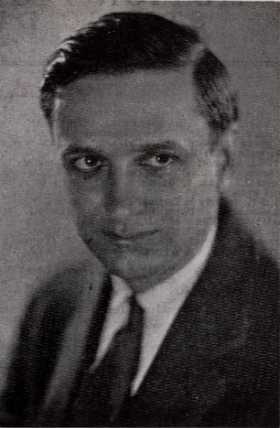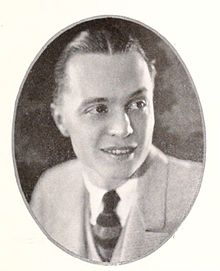
The Story of Louis Pasteur is a 1936 American black-and-white biographical film from Warner Bros., produced by Henry Blanke, directed by William Dieterle, that stars Josephine Hutchinson, Anita Louise and Donald Woods, and Paul Muni as the renowned scientist who developed major advances in microbiology, which revolutionized agriculture and medicine. The film's screenplay—which tells a highly fictionalized version of Pasteur’s life—was written by Pierre Collings and Sheridan Gibney, and Edward Chodorov (uncredited).

The Academy Award for Best Adapted Screenplay is the Academy Award for the best screenplay adapted from previously established material. The most frequently adapted media are novels, but other adapted narrative formats include stage plays, musicals, short stories, TV series, and even other films and film characters. All sequels are also considered adaptations by this standard.

Herman Jacob Mankiewicz was an American screenwriter who, with Orson Welles, wrote the screenplay for Citizen Kane (1941). Both Mankiewicz and Welles would go on to receive the Academy Award for Best Original Screenplay for the film. He was previously a Berlin correspondent for Women’s Wear Daily, assistant theater editor at The New York Times, and the first regular drama critic at The New Yorker. Alexander Woollcott said that Mankiewicz was the "funniest man in New York".

Sidney Coe Howard was an American playwright, dramatist and screenwriter. He received the Pulitzer Prize for Drama in 1925 and a posthumous Academy Award in 1940 for the screenplay for Gone with the Wind.

Joseph Schildkraut was an Austrian-American actor. He won an Oscar for his performance as Captain Alfred Dreyfus in the film The Life of Emile Zola (1937); later, he was nominated for a Golden Globe for his performance as Otto Frank in the film The Diary of Anne Frank (1959) and a Primetime Emmy for his performance as Rabbi Gottlieb in a 1962 episode of the television series Sam Benedict.
William Dieterle was a German-born actor and film director who emigrated to the United States in 1930 to leave a worsening political situation. He worked in Hollywood primarily as a director for much of his career, becoming a United States citizen in 1937. He moved back to Germany in the late 1950s.

George Brackett Seitz was an American playwright, screenwriter, film actor and director. He was known for his screenplays for action serials, such as The Perils of Pauline (1914) and The Exploits of Elaine (1914).

George S. Barnes, A.S.C. was an American cinematographer active from the era of silent films to the early 1950s.

William H. Daniels ASC was a film cinematographer who was Greta Garbo's personal lensman, serving as the cinematographer for such Garbo-starring films as Torrent (1926), The Mysterious Lady (1928), The Kiss (1929), Anna Christie, Romance, Grand Hotel (1932), Anna Karenina (1935), and Camille (1936). Early in his career he worked regularly with director Erich von Stroheim, providing cinematography for such films as The Devil's Pass Key (1920) and Greed (1924). Daniels went on to win an Academy Award for Best Cinematography for his work on The Naked City (1948).

Charles G. Rosher, A.S.C. was an English-born cinematographer who worked from the early days of silent films through the 1950s.

Jules Furthman was an American magazine and newspaper writer before working as a screenwriter. Pauline Kael once wrote that Furthman "has written about half of the most entertaining movies to come out of Hollywood "

Tony Gaudio, A.S.C. was an Italian-American cinematographer and sometimes is cited as the first to have created a montage sequence for a film.

Hal Mohr, A.S.C. was a famed movie cinematographer who won an Oscar for his work on the 1935 film, A Midsummer Night's Dream. He was awarded another Oscar for The Phantom of the Opera in 1943, and received a nomination for The Four Poster in 1952.
Seton Ingersoll Miller was an American screenwriter and producer. During his career, he worked with film directors such as Howard Hawks and Michael Curtiz. Miller received two Oscar nominations and won once for Best Screenplay for fantasy romantic comedy film Here Comes Mr. Jordan (1941) along with Sidney Buchman.
Joseph Walker, A.S.C. was an American cinematographer who worked on 145 films during a career that spanned 33 years.
Frank Russell Butler was an American film and theatre actor and later an award-winning screenwriter, born in Oxford, Oxfordshire, England to parents Frederick Butler and Sarah Ann Hedges. His son, Hugo Butler, also became a Hollywood screenwriter.

Gladys Lehman was a prolific American screenwriter who had a long career in Hollywood.
Sheridan de Raismes Gibney was a writer and producer in theater and film. He attended Amherst College and received an honorary M.A. from it. He later served as an instructor at Hobart and William Smith Colleges. He began in film in 1931, but tended to see himself more as a playwright. He received 2 Academy Awards for Best Screenplay and Best Story for The Story of Louis Pasteur, sharing the award with Pierre Collings. He particularly had a fondness for Restoration comedy. He would later become President of the Screen Writers Guild twice. As a member of the League of American Writers, he suffered from the Hollywood blacklist. Jack Warner later retracted the claim Gibney was a Communist and Gibney had proposed the group criticize Soviet actions against Finland although that ultimately was unanimously voted down. In his later life Gibney did work in television.

Howard J. Green was an American screenwriter who worked in film and television. He was the first president of the Screen Writers Guild and a founder of the subsequent Writers Guild of America, West.














